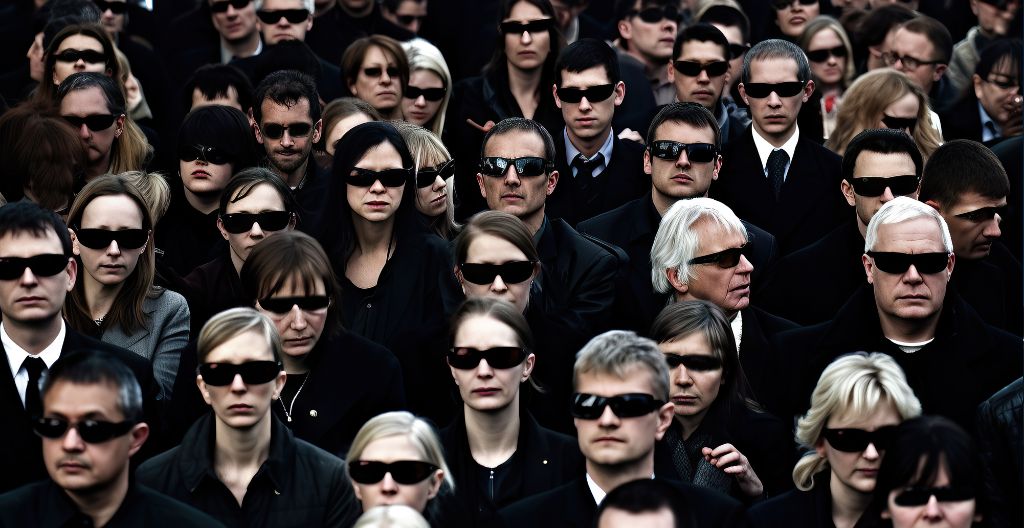This study provides an in-depth comparison of misinformation and disinformation, two prevailing phenomena in the digital age. It explores their origins, impacts, and distinct characteristics, while also examining the role of big tech companies and journalists in mitigating their effects.
Focusing on sub-Saharan Africa, the study further investigates the spread and motivations behind misinformation, and discusses potential strategies for combatting it.
This analysis seeks to enrich understanding and foster more effective responses to these pervasive challenges.
Key Takeaways
- Misinformation refers to false information that is spread unknowingly or unintentionally, while disinformation refers to false information that is intentionally spread to deceive and mislead.
- The key distinction between misinformation and disinformation is intent.
- Misinformation can result from mistakes, misinterpretation, or forgetfulness, while disinformation is often part of coordinated campaigns and can be used for political subversion or propaganda.
- Media literacy, fact-checking resources, and collaboration between technology companies, governments, and individuals are crucial in combating the spread of both misinformation and disinformation.
Understanding Misinformation: Definition, Origin, and Impact
While misinformation, originating in the late 1500s, is often propagated unknowingly due to errors or lack of fact-checking, it is important to understand its significant societal impact, particularly in the era of digital technology and social media, where it spreads rapidly and widely.
Misinformation vs Disinformation: the distinction lies in the intent behind the spread. Misinformation is shared unintentionally, often due to ignorance or misunderstanding. Disinformation, on the other hand, is spread deliberately with the intent to deceive. Both have the potential to influence public opinion and fuel societal divisions.
In this digital age, the rapid proliferation of both misinformation and disinformation underscores the critical need for effective strategies to promote media literacy and fact-checking.
Disinformation Uncovered: Definition, Origin, and Consequences
Throughout the 1960s, disinformation emerged as a deliberate tool for deception and manipulation, and its pervasive impact on society today necessitates a comprehensive understanding of its origin, definition, and far-reaching consequences.
Originating from the Russian term ‘dezinformátsiya,’ disinformation is meticulously crafted to mislead the public, often for political or strategic advantages. This intentional spread of false information is utilized by governments, intelligence agencies, and individuals with malicious intent. Compared to misinformation, disinformation is more dangerous due to its deliberate nature.
In the digital age, the prevalence of disinformation has escalated, exploiting social platforms to sow discord and manipulate public opinion. Thus, understanding disinformation, its origins, and its implications is essential for developing effective strategies to counteract its detrimental effects on society.
Identifying the Differences: Misinformation Versus Disinformation
In the realm of false information, a clear distinction exists between misinformation and disinformation. Misinformation refers to unintentionally spread false information, while disinformation denotes deliberately crafted and disseminated falsehoods for the purpose of deception. The primary difference between the two lies in the intent behind their propagation.
Misinformation is often the result of errors or misunderstandings, devoid of any malicious intent. It can be spread unknowingly by individuals who believe they are sharing accurate information. This can occur due to a lack of knowledge, misinterpretation of data, or reliance on unreliable sources.
Conversely, disinformation is a deliberate act of deception. It is created and spread with the intention of manipulating or misleading people. Disinformation is a powerful tool often employed for political manipulation, espionage, or subversion. It can be used to sow discord, influence public opinion, or undermine trust in institutions.
With the digital age amplifying the reach and impact of both misinformation and disinformation, it becomes imperative to understand their nuances. Critical thinking, media literacy, and robust fact-checking mechanisms are essential in combating these twin challenges in our information ecosystem. By critically evaluating information, verifying sources, and promoting reliable and accurate reporting, we can better navigate the complex landscape of information and protect ourselves from the harmful effects of false information.

Strategies to Counteract Misinformation and Disinformation
We need to further explore and implement diverse strategies to effectively counteract the rampant spread of misinformation and disinformation in our society. These strategies must encompass media literacy programs, robust fact-checking resources, and comprehensive education about the distinction between misinformation and disinformation.
Collaboration between technology companies, governments, and individuals is also crucial to develop effective measures. Tech giants such as Facebook and Google should shoulder increased responsibility in halting the propagation of false information. Journalists, too, need to navigate the challenges of addressing disinformation, maintaining caution in accusations without concrete evidence of intent.
Only through this multifaceted approach can we hope to combat the insidious impact of misinformation and disinformation on our public discourse.
Case Study: The Effects of Misinformation and Disinformation in Digital Age
Amid the digital age, the detrimental effects of misinformation and disinformation are pervasive, posing a substantial threat to the integrity of public discourse, and yet, they provide a compelling case study for understanding and combating the spread of false information.
The unchecked dissemination of inaccurate content, whether unintentional or deliberate, can distort public opinion, undermine trust in institutions, and exacerbate societal divisions. Evidence suggests that digital platforms, particularly social media, are hotbeds for such activities. The deception often lies not just in the content but also in the manipulation of digital algorithms to boost visibility.
Therefore, addressing this issue necessitates a comprehensive approach, integrating effective fact-checking, promoting digital literacy, and fostering collaboration between tech companies, policymakers, and individuals to safeguard the credibility of information in this era of digital communication.
Conclusion
This study illuminates the nuanced differences between misinformation and disinformation, highlighting their origins, implications, and strategies for countering their influence.
The case of sub-Saharan Africa underlines the importance of media literacy and collaborative efforts in mitigating falsehoods’ influence.
Future research should further explore practical solutions to this global challenge, thereby contributing to a safer, better-informed digital society.
Such advancements may ultimately diminish the detrimental societal impact of misinformation and disinformation.
Sign up for our Life Sciences Newsletter and boost your engagement with HCPs
FAQ
Are GDPR Privacy Policies Related to Misinformation and Disinformation?
GDPR privacy policies are not directly related to misinformation and disinformation. GDPR focuses on the protection and handling of personal data, ensuring it’s processed lawfully and transparently. While it governs how personal data is used, it doesn’t address the spread or creation of misinformation and disinformation. These issues are more about the accuracy and truthfulness of content, which falls outside the scope of GDPR. Other regulations and policies, often related to media and internet governance, are more relevant for addressing misinformation and disinformation.
How does DOF impact the interpretation of scientific images thus leading to misinformation or disinformation?
Depth of Field (DOF) in microscopy affects which parts of an image are in focus. Limited DOF can lead to key details being blurred, potentially causing misinterpretation of scientific data. Misinformation or disinformation may arise if these unclear images are mistakenly or misleadingly presented as definitive evidence.

